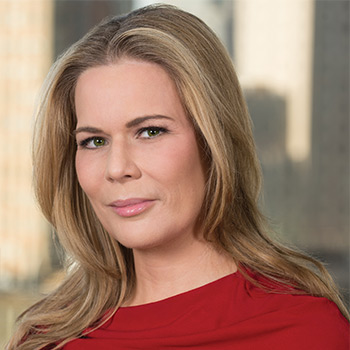With the Federal Reserve signaling a handful of interest rate hikes ahead and inflation hitting its highest level since 1982, we believe market conditions have become favorable to more defensive and value/income-oriented equities of the soft drinks industry, notes analyst Garrett Nelson in CFRA Research's flagship newsletter, The Outlook.
Soft drink companies may provide inflation protection, value, and income. These firms possess some of the world's most iconic brands, giving them the ability to pass along higher costs to consumers in the form of price increases. Studies have shown that consumers are generally unwilling to substitute generic, private label cola products for a Coke or Pepsi regardless of the economic environment.
Because of this high degree of demand inelasticity, in addition to their stable cash flows and attractive dividends, we view soft drink equities as good inflation hedges.
Soft drink companies are high margin and strong free cash flow generating businesses. For the group, gross margins ranged from 53.4% for PepsiCo (PEP) to 60.1% for The Coca-Cola Company (KO) in 2021 — with Monster Beverage Corp. (MNST) and Keurig Dr. Pepper (KDP) expected to post margins in between that range.
Free cash flow either totaled or is expected to total between $1.4 billion (MNST) and $11.3 billion (KO) in 2021, and importantly, no soft drink company has posted negative earnings or free cash flow in the last decade. We view this fact as a testament to the earnings stability and strong margin-generating nature of soft drink companies.
Soft drink names tend to be more value and income oriented, with generous dividend yields. KO has increased its dividend for 59 consecutive years to the current level of $1.68/share annualized (a 2.8% yield) and has paid dividends every year since 1920, while PEP has now raised its dividend for 50 straight years to the current level of $4.60/share annualized, beginning with the June 2022 distribution (a 2.8% yield) and has paid a quarterly dividend ever since 1965.
Looking at KDP, the company just recently started paying a more generous dividend, as it has been focused on debt reduction over the last few years, bringing its leverage ratios down to lower levels. That said, KDP's current dividend of $0.75/share annualized currently equates to a respectable 2.0% yield. MNST does not pay a dividend, but has a history of repurchasing stock and maintains a debt-free balance sheet.
The Coca-Cola Company now screens as a more compelling opportunity, in our view, after underperforming its archrival (PEP) and the broader market for three consecutive years.
One of the reasons KO has underperformed is the fact it is a beverage pure-play with significant exposure to on-premise channels, which have suffered greatly since the onset of the Covid-19 pandemic. KO also has high exposure to carbonated soft drinks, a beverage category that has been hurt by work-from-home trends.
The final headwind for KO comes in the form of an impending legal decision. For the last several months, KO has been awaiting a decision in the appeal of its IRS tax case from the U.S. Circuit Court of Appeals for the Eleventh Circuit.
The potential liability of an adverse ruling has been calculated at $12 billion. Regardless of the outcome, we think a decision will lift a major overhang, allowing investors to focus on KO's fundamentals and strong underlying momentum from the rebound in on-premise sales and robust pricing environment.
PepsiCo Inc. is a stock we continue to like due to its above-average growth profile and beverage/food and snack diversification, which it has benefited from throughout the pandemic.
In fact, food and snack products accounted for approximately 55% of PEP's total revenue in 2020. PEP's high-margin Frito-Lay and Quaker Foods businesses have particularly benefited from stay-at-home trends, helping offset challenges in soft drink sales.
PEP's Frito-Lay North America segment (25% of total revenue and 51% of total operating profit in 2021) is growing at a robust pace and the Quaker Foods North America segment accounted for an additional 4% of total revenue and 5% of total operating profit last year. PEP has also shown a willingness to grow its portfolio via the acquisition of faster-growing, emerging brands.
Keurig Dr. Pepper is a company that has dramatically improved its balance sheet over the last few years and has benefited from the surge in ready-to-drink coffee sales since the onset of Covid-19.
Keurig is the bestselling single-serve brewing machine in the U.S. and Canada, and it also possesses the number two and five bestselling K-cup pods in the U.S. (Green Mountain and Original Donut Shop, respectively) as well as the second bestselling pod in Canada (Van Houtte).
The company recently started paying a more generous dividend, which it raised from $0.60 to $0.75 per share annualized (a 2.0% yield), in addition to a $4 billion share repurchase authorization announced in October.
Monster Beverage generated industry-leading gross margins in 2020, has a net debt-free balance sheet, and is focused on energy drinks, one of the fastest-growing beverage categories prior to the pandemic. We believe MNST should benefit from easier Y/Y comps in 2022.
Additionally, the company is just scratching the surface of its international growth potential, as countries other than the U.S. and Canada accounted for only 33% of total net sales in 2020 (compared to 25% in 2016). Despite recent challenges, MNST boasts the strongest EPS CAGR in the group, with 12.8% growth expected between 2020 and 2023.
Last month, Monster made a move that we think represents a significant strategic step by expanding from energy drinks into the alcohol beverage market, announcing the acquisition of CANarchy Craft Brewery Collective LLC for $330 million in cash in a deal expected to close later this quarter.
Risks to our analysis include changes in consumer habits that could lead to weaker-than-expected demand in beverages and food and snack products; macroeconomic, political, and foreign currency-related risks; commodity and transportation costs; unfavorable weather; and increased competition.


















